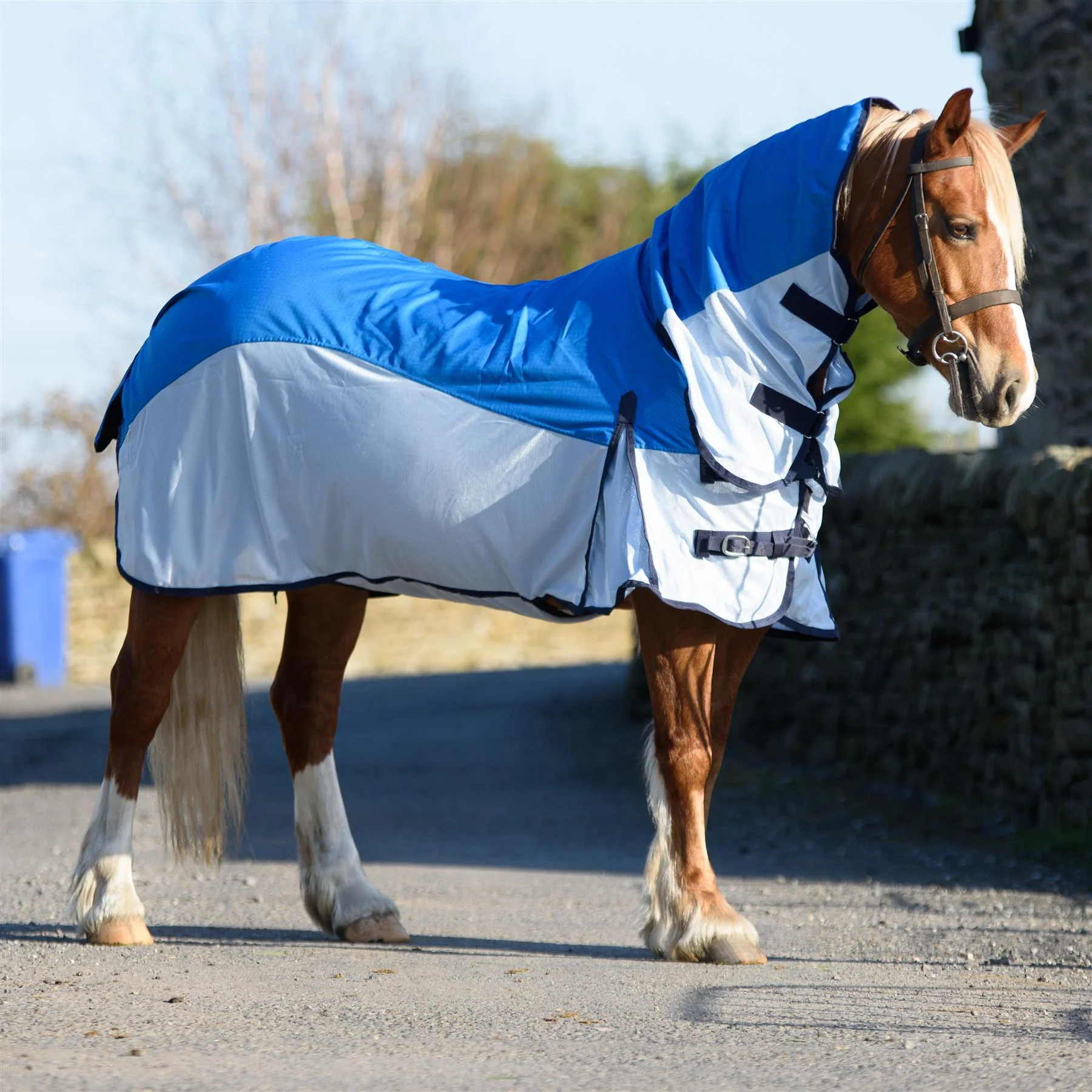Choosing the right turnout rug for your horse is essential for their comfort, protection, and overall well-being, especially in varying weather conditions. Two popular options in the equestrian world are traditional turnout rugs and their no-fill counterparts. In this guide, we'll delve into the key differences between these two types of rugs, considering factors like insulation, durability, and waterproofing, to help you make an informed decision for your equine companion.
Understanding Traditional Turnout Rugs
Traditional turnout rugs are the go-to choice for many horse owners, offering a combination of warmth and protection. These rugs typically feature fill material, such as polyester or wool, which provides insulation to keep the horse warm during colder temperatures. The fill also adds bulk to the rug, giving it a padded feel and providing some protection against minor bumps and scrapes. Traditional rugs come in various weights, measured in grams per square meter (gsm), allowing owners to choose the appropriate level of warmth for their horse's needs.
Exploring No-Fill Turnout Rugs
On the other hand, no fill turnout rug offer a lighter and more streamlined option. As the name suggests, these rugs lack the fill material in traditional rugs, making them thinner and less bulky. While this means they provide less insulation, they are more versatile, particularly in milder climates or during transitional seasons. No-fill rugs are often preferred for horses who tend to overheat quickly or those who are more active and require greater freedom of movement.
Insulation and Temperature Regulation
One of the most significant differences between traditional and no-fill turnout rugs is their insulation properties. Traditional rugs excel in providing warmth, making them ideal for colder climates or for horses who are clipped or have naturally thin coats. The fill material traps heat near the horse's body, ensuring they stay comfortable even in chilly conditions. However, in warmer weather, traditional rugs can cause horses to overheat, leading to discomfort and potentially affecting their performance.
In contrast, no-fill turnout rugs offer minimal insulation, allowing for better temperature regulation. These rugs are excellent for mild to moderate weather conditions, protecting against wind and rain without causing the horse to overheat. Additionally, the lack of fill material allows for more excellent breathability, preventing moisture buildup and reducing the risk of skin irritations or fungal infections. Overall, no-fill rugs are a practical choice for horses who require protection from the elements without the added warmth of traditional rugs.
Durability and Longevity
When considering turnout rugs, durability is a crucial factor, especially for outdoor use where the rug may be subjected to rough terrain and constant movement. Traditional turnout rugs, with their thicker construction and added fill material, are generally more durable and long-lasting than their no-fill counterparts. The fill provides extra padding and protection against wear and tear, making traditional rugs suitable for horses that spend much time in the field or during turnout.
However, this isn't to say that no-fill turnout rugs lack durability altogether. While they may not be as robust as traditional rugs, many manufacturers use high-quality materials and reinforced stitching to ensure longevity. Additionally, the lighter weight and streamlined design of no-fill rugs can be advantageous for particularly active horses or those that require greater freedom of movement. With proper care and maintenance, both rugs can provide reliable protection for your horse season after season.
Waterproofing and Breathability
Waterproofing is another essential consideration when choosing a turnout rug, as it determines how well the rug will repel moisture and keep your horse dry in wet conditions. Both traditional and no-fill turnout rugs often feature waterproof outer shells made from materials like nylon or polyester. However, traditional rugs may have an advantage in this area due to their thicker construction, which can provide additional protection against heavy rain and prolonged exposure to moisture.
That said, the breathability of a turnout rug is equally essential, as it affects the horse's comfort and overall well-being. No-fill turnout rugs typically offer better breathability than traditional rugs, thanks to their lighter weight and minimalist design. This allows for adequate airflow, preventing the horse from becoming sweaty or overheating during exertion. Proper breathability also helps to maintain the health of the horse's skin and coat, reducing the risk of issues like rain rot or bacterial infections.
Conclusion
In conclusion, the choice between traditional and no-fill turnout rugs ultimately depends on your horse's needs and the prevailing weather conditions in your area. Traditional rugs excel in providing warmth and durability, making them suitable for colder climates and horses that require extra insulation. On the other hand, no-fill turnout rugs offer versatility and breathability, making them ideal for milder weather or active horses that need greater freedom of movement.
When selecting a turnout rug, consider factors such as insulation, durability, waterproofing, and breathability to ensure your horse's comfort and well-being. Whether you opt for the tried-and-tested warmth of a traditional rug or the lightweight practicality of a no-fill design, investing in a high-quality turnout rug is essential for keeping your equine companion comfortable and protected year-round.


No comments yet